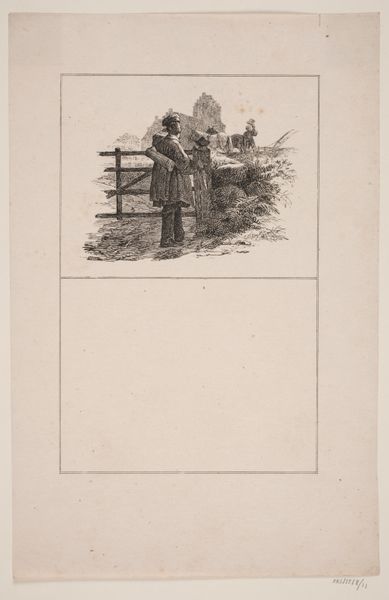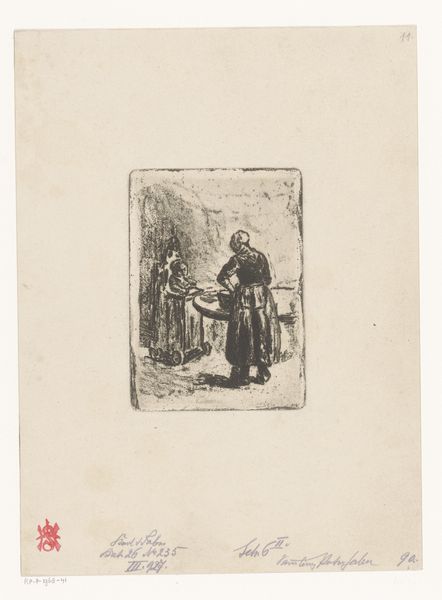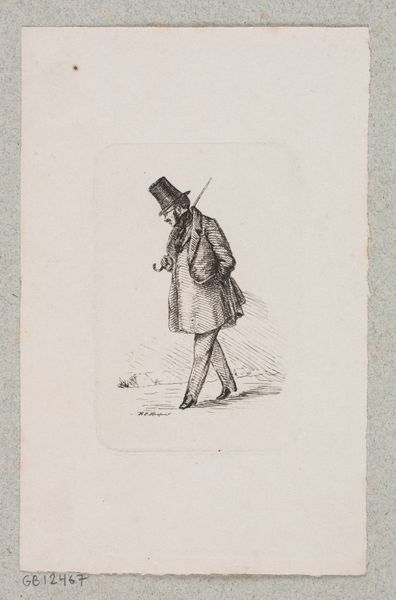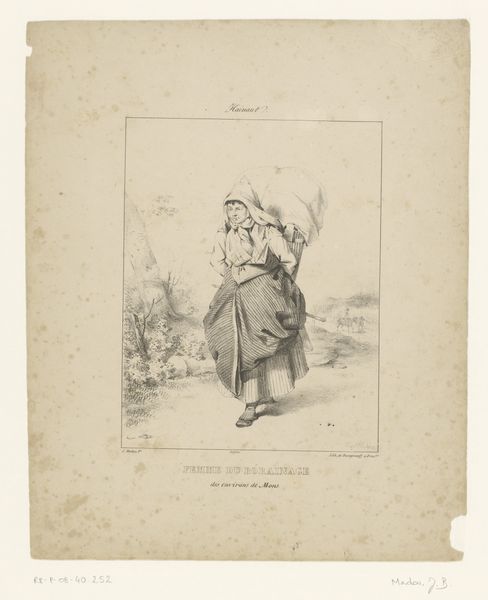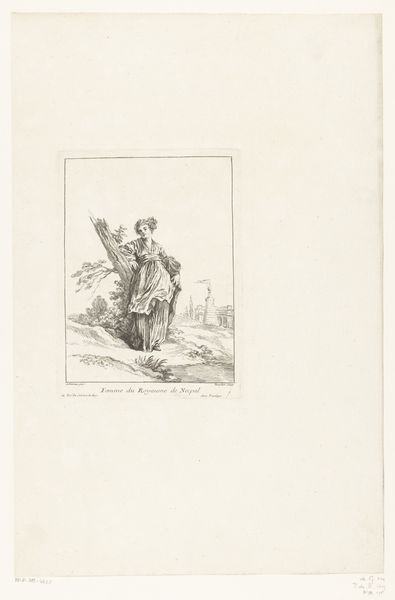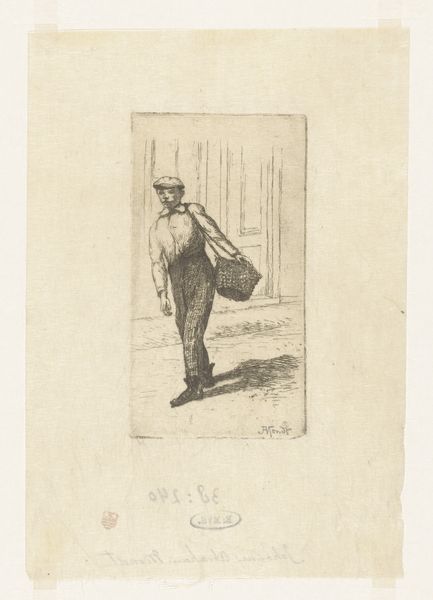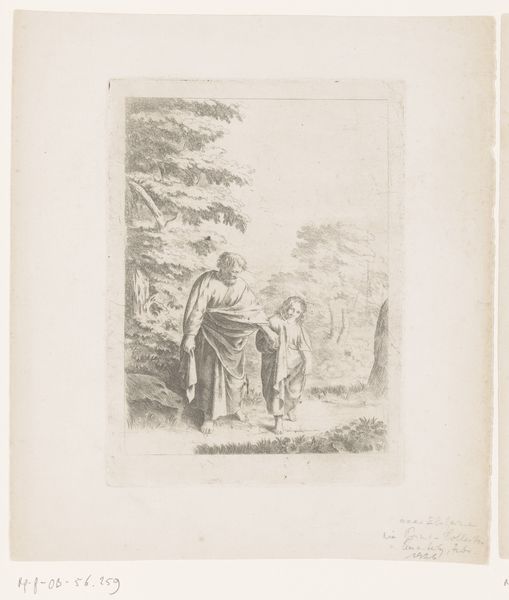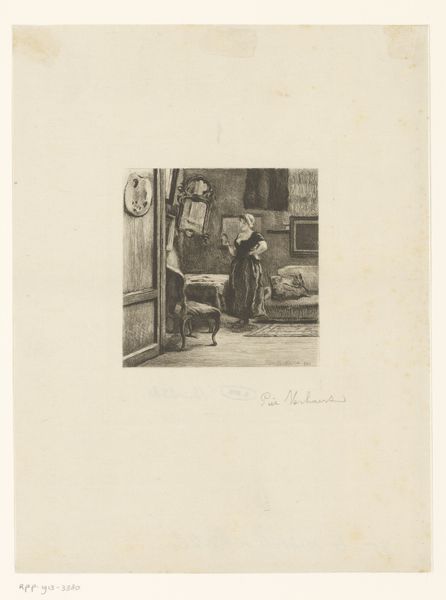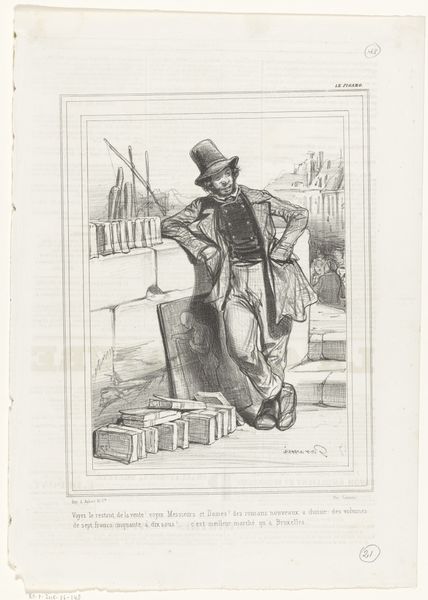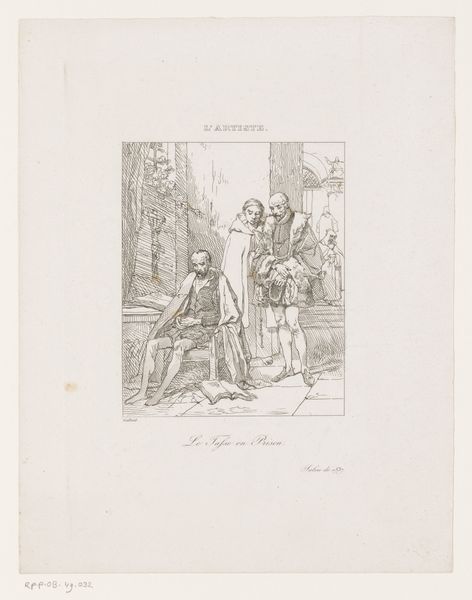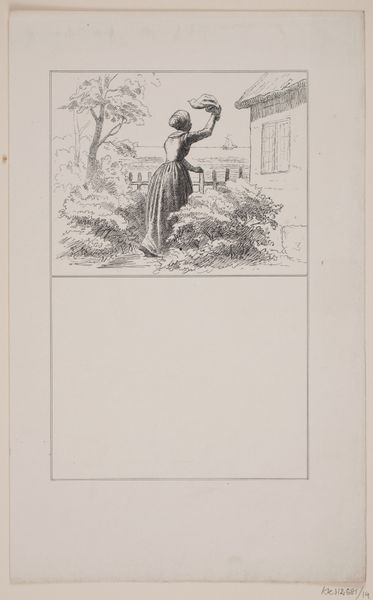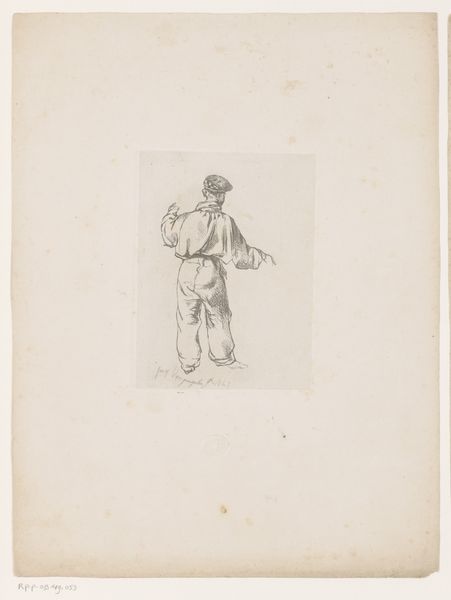
Vignet til Poul Møller: "En dansk students eventyr" 1856 - 1935
0:00
0:00
drawing, print, paper, ink
#
pencil drawn
#
drawing
# print
#
pencil sketch
#
landscape
#
figuration
#
paper
#
ink
#
genre-painting
Dimensions: 127 mm (height) x 102 mm (width) (bladmaal)
Curator: Let's discuss "Vignet til Poul Møller: \"En dansk students eventyr,\"" a drawing attributed to Herman Rudolf Müller. It likely dates between 1856 and 1935. The work employs ink and pencil on paper, currently held at the SMK, the National Gallery of Denmark. Editor: My first thought is that it exudes a strange calm, despite the potential for drama. A man with a shovel juxtaposed with a fleeing woman in the background… what story is unfolding? Curator: Notice how Müller used different weights of the pencil and ink lines to create depth. The man, central to our focus, is rendered with more precise, defined lines while the woman, much smaller in the background, is sketchier. It draws our eyes toward labor and duty depicted in the scene. Editor: Exactly. It's also compelling how the central male figure seems oblivious to the fleeing female form. She's rendered in less detail, which may indicate that she’s ephemeral. Perhaps she’s meant to embody some fear or emotional aspect tied to this man’s work. Curator: Considering Müller likely intended this as an illustration for a novel, the choice of printmaking and drawing becomes important. Reproducibility was essential for wider distribution, embedding this scenario within reach of the readers. It creates this symbolic tale of hard work and domestic issues easily. Editor: I find the shovel symbolic of burying something—secrets, perhaps. The fleeing woman – escaping not only the man, but also what the man’s work unearths in her life. The image really distills those themes within Poul Møller’s “En dansk students eventyr.” It's not just decoration, but psychological symbolism within the printed text. Curator: In examining the context of its potential role within a novel, the value of Müller’s medium choice—print—cannot be overlooked for making accessible art. The act of creating the drawings and their integration into mass media provided a way for these scenes to become intertwined with popular interpretations of 19th-century life. Editor: I agree. The interplay between labor, domesticity, and hidden turmoil… they speak across the ages. This piece transcends just being part of a book. Curator: The visual language definitely amplifies and extends the written one in unique, accessible ways. Editor: Precisely, inviting its viewers to look beneath surface and behind what's depicted.
Comments
No comments
Be the first to comment and join the conversation on the ultimate creative platform.
